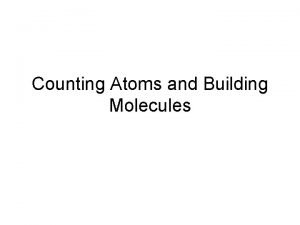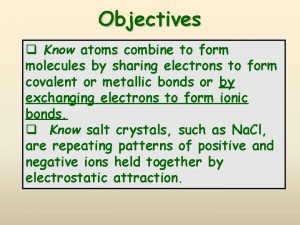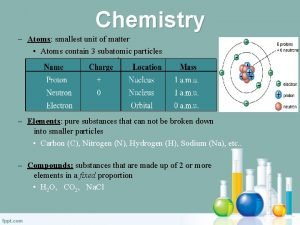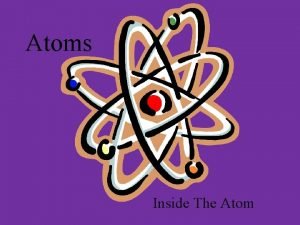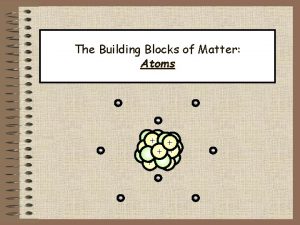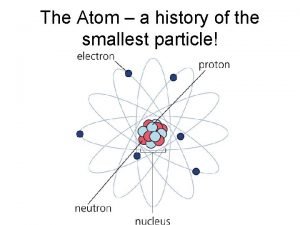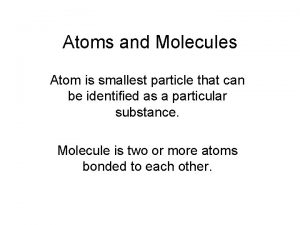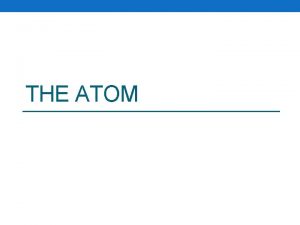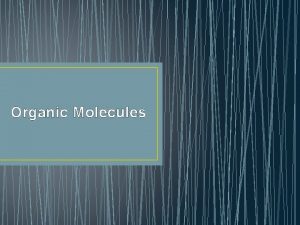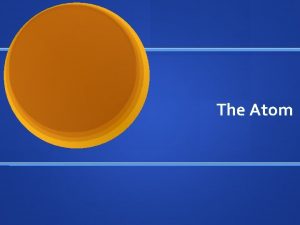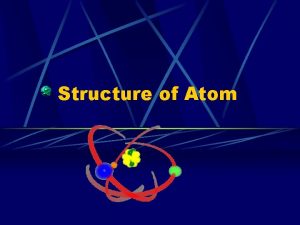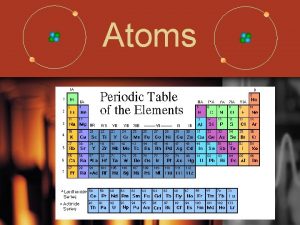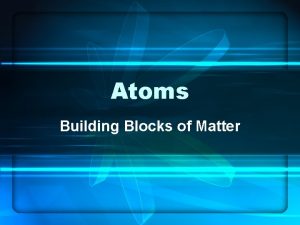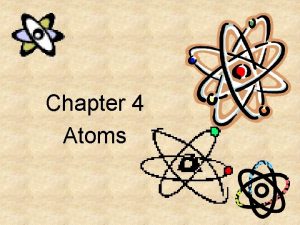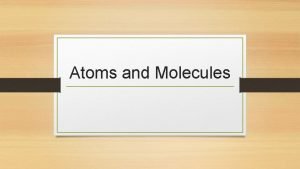Atoms and Molecules Atom The smallest particle of

















- Slides: 17

Atoms and Molecules

Atom � The smallest particle of an element ◦ Examples: �Hydrogen �Carbon �Chlorine �Titanium

The Atomic Model � Democritus (450 B. C. ) ◦ If you kept cutting a substance in half forever, eventually you would end up with an “uncuttable” particle. � John Dalton (1800) ◦ All substances are made of atoms ◦ Atoms of the same element are exactly alike, and atoms of different elements are different. � JJ Thompson (1897) ◦ Discovered electrons ◦ Developed “plum pudding” model

The Atomic Model � Ernest Rutherford (1911) ◦ Most of the atom’s mass is found in a region in the center called the nucleus � Neils Bohr (1913) ◦ Electrons travel around the nucleus in definite paths. � Erwin Schrodinger ◦ There are regions inside the atom where electrons are likely found

Nucleus � The central core of an atom, contains protons and usually neutrons

Proton � Small positively charged particles found in the nucleus of an atom

Neutron � Small uncharged particles found in the nucleus of an atom

Nuclear Energy � The potential energy stored in the nucleus of an atom Fusion Fission

Electron � Tiny, negatively-charged, high-energy particles that move around the outside of the nucleus

Electrical Energy � The energy of moving electrical charges � Charge- ◦ A definite amount of electricity, positive or negative

Element �A substance that cannot be broken down into any other substances


Atoms continued � Atomic Number= number of protons � Atomic Mass= number of protons + neutrons � # Electrons = # Protons

Calculations � Magnesium ◦ 12 protons ◦ 12 electrons ◦ 12 neutrons (24 -12=12) � Oxygen ◦ 8 protons ◦ 8 electrons ◦ 8 neutrons (16 -8=8)

Molecule �A particle made of two or more atoms bonded together

Chemical Bond � The force that holds the atoms together

Chemical energy � The potential energy stored in chemical bonds
 Relationship between atoms and molecules
Relationship between atoms and molecules Mixture of compounds diagram
Mixture of compounds diagram 3bacl2 counting atoms
3bacl2 counting atoms Atoms molecules and ions
Atoms molecules and ions Atoms molecules and ions
Atoms molecules and ions Atoms molecules and ions
Atoms molecules and ions Atoms molecules and ions
Atoms molecules and ions Atoms ions and molecules
Atoms ions and molecules Atoms ions and molecules
Atoms ions and molecules Collision theory states that
Collision theory states that Chapter 2 atoms molecules and ions
Chapter 2 atoms molecules and ions Organic molecules vs inorganic molecules
Organic molecules vs inorganic molecules Why do atoms combine to form molecules
Why do atoms combine to form molecules Compared to atoms of metals, atoms of nonmetals generally
Compared to atoms of metals, atoms of nonmetals generally Are atoms the smallest unit of matter
Are atoms the smallest unit of matter Smallest atoms in periodic table
Smallest atoms in periodic table Atoms as the smallest building block of matter
Atoms as the smallest building block of matter Smallest known particle
Smallest known particle


